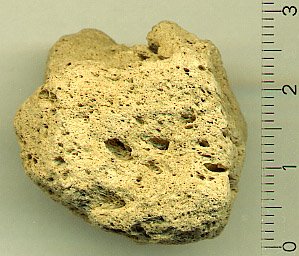| יט וְהַטּוּר, הַשְּׁלִישִׁי--לֶשֶׁם שְׁבוֹ, וְאַחְלָמָה. | 19 and the third row a jacinth, an agate, and an amethyst; |
Amethyst (SiO2) is a violet or purple variety of quartz...Here are two pictures included in the Wikipedia article. The first is a bed of amethyst on base rock,

and the second is a cut amethyst gem

In antiquity, amethyst was quite costly, but nowadays has lost much value when large deposits were found in places such as Brazil.
Meanwhile, Midrash Rabba states regarding אַחְלָמָה:
גד פימיסיון - that the stone of Gad was pimisyon.
Alas, I cannot find any entry for pimisyon in Jastrow - perhaps a reader will have better luck.
If I were forced to guess, I would put forth "pumice," which is a stone. The etymology, via American Heritage Dictionary, via dictionary.com:
[Middle English, from Anglo-Norman pomis, from Late Latin p
Here is the Wikipedia article on pumice:
 Citing the Wikipedia article:
Citing the Wikipedia article:"Pumice is a light, porous type of pyroclastic igneous rock. It is formed during explosive volcanic eruptions when liquid lava is ejected into the air as a froth containing masses of gas bubbles. As the lava solidifies, the bubbles are frozen into the rock. Any type of igneous rock — andesite, basalt, dacite or rhyolite — can form pumice given suitable eruptive conditions."
But perhaps it is something entirely different. Suggestions welcome.

No comments:
Post a Comment